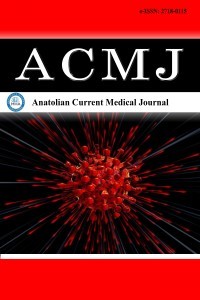1.
Huang S, Wang J, Chen Z, Kang Y. Surgical interventions for ingrown toenail. Foot Ankle Surg. 2024;30(3):181-190. doi:10.1016/j.fas.2023.12. 003
2.
Di Chiacchio N, Di Chiacchio NG. Best way to treat an ingrown toenail. Dermatol Clin. 2015;33(2):277-282. doi:10.1016/j.det.2014.12.009
3.
Borges APP, Pelafsky VPC, Miot LDB, Miot HA. Quality of life with ingrown toenails: a cross-sectional study. Dermatol Surg. 2017;43(5):751-753. doi:10.1097/DSS.0000000000000954
4.
Exley V, Jones K, Watson J, Backhouse M. A survey of the treatment and management of ingrown toenails by UK podiatrists: a cross-sectional survey. J Foot Ankle Res. 2024;17(2):e12017. doi:10.1002/jfa2.12017
5.
Wang HH, Yang TH, Liu CW, Tsai TY, Huang YC. Efficacy of nail braces for acute and chronic ingrown toenails: a prospective study. Dermatol Surg. 2020;46(2):258-266. doi:10.1097/DSS.0000000000001905
6.
Pamuk Ç. Winograd surgery can be performed under partial digital block in patients with ingrown toenails. Foot Ankle Surg. 2022;28(6):785-788. doi:10.1016/j.fas.2021.11.002
7.
Kaya E, Coşkun T. Comparison of Winograde and vandenbos surgical techniques according to Heifetz stage in the treatment of ingrown toenails. J Contemporary Med. 2022;12(6):930-936. doi:10.16899/jcm. 1175187
8.
Heifetz CJ. Ingrown toe-nail: a clinical study. Am J Surg. 1937;38(2):298-315. doi:10.1016/S0002-9610(37)90439-2
9.
Arica IE, Bostanci S, Kocyigit P, Arica DA. Clinical and sociodemographic characteristics of patients with ingrown nails. J Am Podiatr Med Assoc. 2019;109(3):201-206. doi:10.7547/17-023
10.
Zaraa I, Dorbani I, Hawilo A, Mokni M, Ben Osman A. Segmental phenolization for the treatment of ingrown toenails: technique report, follow up of 146 patients, and review of the literature. Dermatol Online J. 2013;19(6):18560. doi:10.5070/D3196018560
11.
Talwar A, Puri N. A study on the surgical treatment of ingrowing toe nail with nail excision with chemical matricectomy versus nail excision alone. Group. 2013;1(1):6. doi:10.7241/ourd.20131.06
12.
Terrill AJ, Green KJ, Salerno A, Butterworth PA. Risk factors for infection following ingrowing toenail surgery: a retrospective cohort study. J Foot Ankle Res. 2020;13(1):48. doi:10.1186/s13047-020-00414-y
13.
Mousavi SR, Khoshnevice J. A new surgical technique for ingrown toenail. ISRN Surg. 2012;2012:438915. doi:10.5402/2012/438915
14.
Khunger N, Kandhari R. Ingrown toenails. Indian J Dermatol Venereol Leprol. 2012;78(3):279-289. doi:10.4103/0378-6323.95442
15.
Exley V, Jones K, O'Carroll G, Watson J, Backhouse M. A systematic review and meta-analysis of randomised controlled trials on surgical treatments for ingrown toenails part I: recurrence and relief of symptoms. J Foot Ankle Res. 2023;16(1):35. doi:10.1186/s13047-023-00631-1
16.
Karaca N, Dereli T. Treatment of ingrown toenail with proximolateral matrix partial excision and matrix phenolization. Ann Fam Med. 2012; 10(6):556-559. doi:10.1370/afm.1406
17.
Haneke E. Controversies in the treatment of ingrown nails. Dermatol Res Pract. 2012;2012:783924. doi:10.1155/2012/783924
18.
Barreiros H, Matos D, Goulão J, et al. Using 80% trichloroacetic acid in the treatment of ingrown toenails. An Bras Dermatol. 2013;88(6):889-893. doi:10.1590/abd1806-4841.20132296
19.
Kayalar M, Bal E, Toros T, et al. Results of partial matrixectomy for chronic ingrown toenail. Foot Ankle Int. 2011;32(9):888-895. doi:10.3113/FAI.2011.0888
20.
Eekhof JA, Van Wijk B, Knuistingh Neven A, van der Wouden JC. Interventions for ingrowing toenails. Cochrane Database Syst Rev. 2012; 2012(4):Cd001541. doi:10.1002/14651858.CD001541.pub3
21.
Guler O, Tuna H, Mahirogullari M, et al. Nail braces as an alternative treatment for ingrown toenails: results from a comparison with the Winograd technique. J Foot Ankle Surg. 2015;54(4):620-624. doi:10.1053/ j.jfas.2015.04.013

